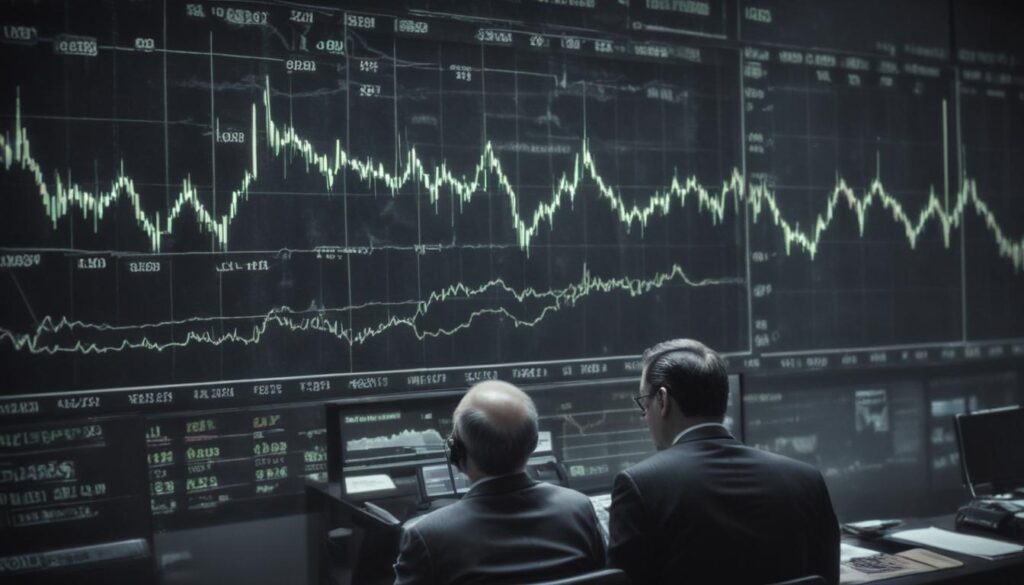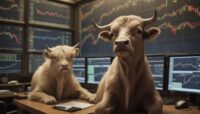Now Reading: Futures Contracts Made Simple
- 01
Futures Contracts Made Simple
Futures Contracts Made Simple

Understanding Futures Contracts A Beginner’s Guide
Have you ever delved into the world of investing, only to be stopped in your tracks by complex terms like derivatives, options, and futures? It can feel like an exclusive club with a language all its own, leaving you on the outside looking in. This complexity often creates a barrier, making you hesitant to explore powerful financial tools that could enhance your portfolio. The good news is that these concepts are not as impenetrable as they seem.
This guide is designed to be your key to unlocking one of those concepts. We will break down futures contracts into simple, understandable components. Forget the confusing jargon and dense academic explanations. Here, you will learn what futures are, see how they work through practical examples, and understand why traders and businesses use them every day. By the end, you’ll have the confidence to see futures not as a threat, but as a strategic tool in the financial world.
What Exactly Is a Futures Contract
At its core, a futures contract is a legally binding agreement to buy or sell a specific asset at a predetermined price on a specific date in the future. Think of it like pre-ordering a highly anticipated product. You agree today to pay a set price to receive it on its release date, regardless of whether the store’s price goes up or down by then. You have locked in your price and the delivery date. A futures contract works on the same principle, but for assets like crude oil, gold, corn, or even financial instruments like stock market indexes.
Every futures contract is standardized, which means the key details are the same for everyone. These details include the quantity of the asset (e.g., 1,000 barrels of oil), the quality of the asset (e.g., West Texas Intermediate crude), and the expiration month. The only variable that changes is the price, which is determined by supply and demand in the open market. This standardization is what makes it possible for futures to be traded easily on an exchange, like the Chicago Mercantile Exchange (CME). A crucial element to understand is that it’s an obligation, not a choice. Unlike an options contract, which gives you the right to buy or sell, a futures contract legally obligates you to fulfill the deal.
The Two Main Purposes of Trading Futures
People and institutions trade futures contracts for two primary reasons that are essentially two sides of the same coin hedging and speculation. These motivations are what create a deep, liquid, and functional market where risk can be effectively transferred from one party to another. Understanding both is essential to grasping the full picture of how these markets operate and the role they play in the global economy.
Hedging to Reduce Risk
One of the original and most important functions of futures is hedging, which is a strategy to reduce risk. Imagine a corn farmer who is worried that the price of corn will fall before she can harvest and sell her crop. To protect herself, she can sell a corn futures contract, locking in a sale price today. On the other side, a large cereal company like Kellogg’s might be worried that the price of corn will rise, increasing its costs. To protect itself, it can buy a corn futures contract, locking in a purchase price. In this scenario, both parties have used futures to eliminate price uncertainty and manage their business risk. They are not trying to make a profit from the contract itself; they are using it as an insurance policy.
Speculation to Seek Profit
The other major reason to trade futures is speculation. Speculators are traders who aim to profit from correctly predicting the future price movements of an asset. They have no intention of ever making or taking delivery of the underlying asset, like the corn or oil. Instead, their goal is to buy low and sell high, or sell high and buy low. For example, if a speculator believes the price of crude oil is going to rise, they will buy an oil futures contract. If the price does rise, they can sell the contract for a profit before it expires. Speculators provide essential liquidity to the market, taking on the risk that hedgers want to get rid of.
Understanding Leverage and the High Stakes
The primary attraction for most speculators in the futures market is leverage. Leverage allows you to control a large amount of an asset with a relatively small amount of capital. This initial capital is known as margin. For instance, you might only need to put down $5,000 in margin to control a futures contract representing $100,000 worth of the S&P 500. This means that a small percentage move in the market can result in a huge percentage gain on your initial capital. If the market moves in your favor, the returns can be substantial and rapid.
However, leverage is a double-edged sword and is the source of the significant risk in futures trading. Just as it magnifies your gains, it also magnifies your losses. That small market move can go against you, leading to devastating losses that can exceed your initial margin deposit. If your losses grow too large, you will receive a “margin call” from your broker, demanding that you deposit more funds to cover your position. If you fail to do so, your broker will forcibly close your position, locking in your loss. It is this extreme level of risk that makes futures trading unsuitable for beginners or those with a low risk tolerance. It requires deep market knowledge, a solid trading plan, and disciplined risk management.


































